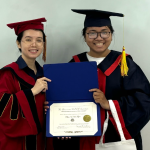English Fusion is a teaching and learning methodology that emphasizes the integration of seemingly opposing elements to foster a deeper, more comprehensive understanding of the English language. It draws inspiration from Carl Jung’s concept of the Transcendent Function, which highlights the power of uniting contrasting forces within the psyche for personal growth and development.
First, let’s understand how the term “transcendent function” is used in mathematics. A transcendent function is one that cannot be expressed using only a finite combination of basic algebraic operations, such as addition, subtraction, multiplication, division, and raising to a power.
- Algebraic Functions: The basic tools of math, like addition, subtraction, and multiplication. They’re practical and reliable, but they have their limits.
- Transcendent Functions: These are the rebels of the math world, like exponential functions and logarithms. They go beyond the ordinary, defying the constraints of simple algebra to describe complex, exponential growth or the relationship between numbers and their powers.
Now, let’s bridge this to psychology and language learning. Carl Jung, a renowned psychologist, used the term “Transcendent Function” to describe a similar process within the human mind. He believed that:
- The Conscious Mind: This is the logical, rule-oriented part of you that focuses on grammar and vocabulary. It’s like the algebraic functions of your mind.
- The Unconscious Mind: This is the deeper, intuitive part of you where creativity, emotions, and hidden meanings reside. It’s akin to the transcendent functions of your mind.
The Transcendent Function is the bridge between these two aspects of the mind. It’s the spark that ignites when you move beyond rote memorization and allow yourself to feel the language, to connect with its emotional power and underlying meaning.
Language Learning as a Transcendent Journey
Language, like the human psyche, is full of contrasts and contradictions:
- Concrete vs. Abstract: Words with literal meanings versus those used metaphorically.
- Logic vs. Emotion: The grammatical structure of a sentence versus the feelings it evokes.
- Individual vs. Collective: Personal interpretations of a text versus shared understanding within a group.
- Formal vs. Informal: The language of academia versus the language of everyday life.
By embracing these opposites, you’re not just learning vocabulary and grammar; you’re activating your Transcendent Function. You’re allowing your conscious and unconscious mind to work together, creating a deeper, more intuitive understanding of the language.
Embrace Duality: A Method for Mastery
Here’s how you can adapt those strategies to your classroom activities:
Vocabulary Fusion:
- Literal vs. Figurative Matching Game: Create pairs of cards with literal and figurative meanings of the same word or phrase (e.g., “break a leg” – to actually break a leg vs. good luck). Students match the pairs and discuss the differences.
- Idiom Creation: Have students create their own idioms based on existing ones, or challenge them to illustrate the literal meaning of an idiom in a humorous way.
- Metaphor Poems: Introduce students to poems that use rich metaphors. Have them identify and interpret the metaphors, then write their own poems using this technique.
Emotional Grammar:
- Sentence Transformation: Provide sentences with neutral wording, and have students rewrite them to express different emotions (anger, joy, sadness, etc.). Discuss how word choice and sentence structure impact emotional tone.
- Character Monologues: After reading a story or watching a scene, have students write a monologue from a character’s perspective, focusing on conveying their emotions through language.
- Debate Prep: Before a debate, have students analyze the language used in their arguments, considering how word choice can influence the audience’s emotional response.
Diverse Perspectives:
- Literature Circles: Divide students into small groups to discuss different aspects of a text. Encourage them to share personal interpretations and listen respectfully to others’ viewpoints.
- Role-Playing: Assign students different roles in a scenario (e.g., characters in a story, different stakeholders in a debate) and have them interact using language appropriate to their perspective.
- Collaborative Writing: Have students work together to write a story or essay, each contributing from their unique perspective.
Code-Switching:
- Register Analysis: Provide examples of formal and informal language (e.g., academic article vs. text message). Have students analyze the differences in vocabulary, grammar, and tone.
- Contextual Writing: Give students prompts that require them to write in different registers (e.g., a formal complaint letter, an informal email to a friend).
- Role-Playing Conversations: Have students role-play conversations in different settings (job interview, casual chat with friends) to practice code-switching.
Creative Tension:
- Improv Games: Use improv games like “Yes, And…” or “Word Association” to encourage spontaneous language use and creativity.
- Storytelling Challenges: Give students a story prompt with conflicting elements (e.g., a superhero with a weakness). Have them create stories that resolve the tension.
- Debate Clubs: Organize regular debates on controversial topics to promote critical thinking and respectful disagreement.
Reflective Integration:
- Language Learning Journals: Encourage students to write regularly about their language learning experiences, noting challenges, successes, and personal reflections.
- Mindful Listening: Guide students through short mindfulness exercises where they focus on the sounds and rhythms of language.
- Learning Strategy Discussions: Have students share their learning strategies with each other and reflect on what works best for them.
By incorporating these activities, you can create a more engaging and dynamic classroom environment that fosters curiosity, creativity, and deeper language understanding.
In language learning, as in nature, contrasting forces can unexpectedly foster growth. Consider the humble oyster: A grain of sand, a seemingly insignificant irritant, invades its delicate interior. Yet, instead of succumbing to this intrusion, the oyster transforms the discomfort into something extraordinary. Layer by layer, it coats the irritant with nacre, ultimately creating a lustrous pearl.
Similarly, in English Fusion, we embrace the friction between contrasting elements of language. The tension between formal and informal speech, the clash of opposing viewpoints in a debate, the juxtaposition of literal and figurative meanings – these are not obstacles to learning, but catalysts for deeper understanding. Like the oyster, we can harness these “irritants” to create something beautiful and valuable: a richer, more nuanced grasp of the English language.
So, are you ready to embark on this transcendent journey of language learning? By embracing the inherent tension of opposites in language—the concrete and abstract, the logical and emotional, the personal and universal—you’ll ignite a deeper curiosity, tap into the richness of human expression, and ultimately, unlock a level of mastery that goes beyond simple fluency. It’s time to transcend the ordinary and discover the extraordinary within language, within yourself, and within your students.



